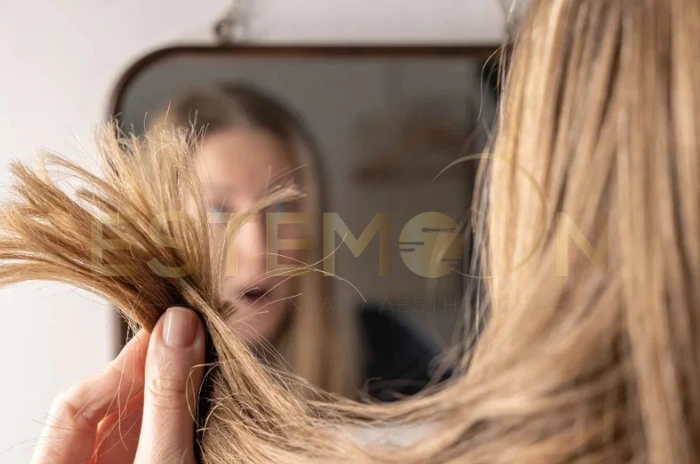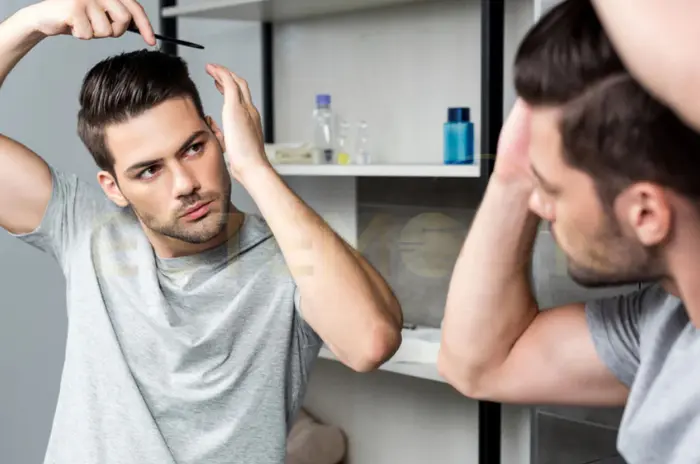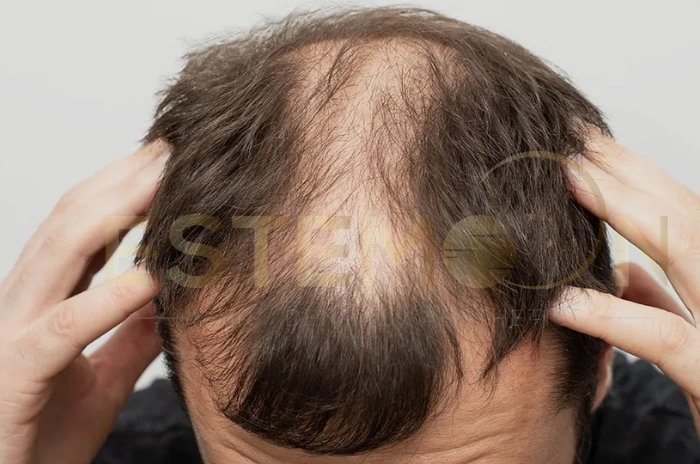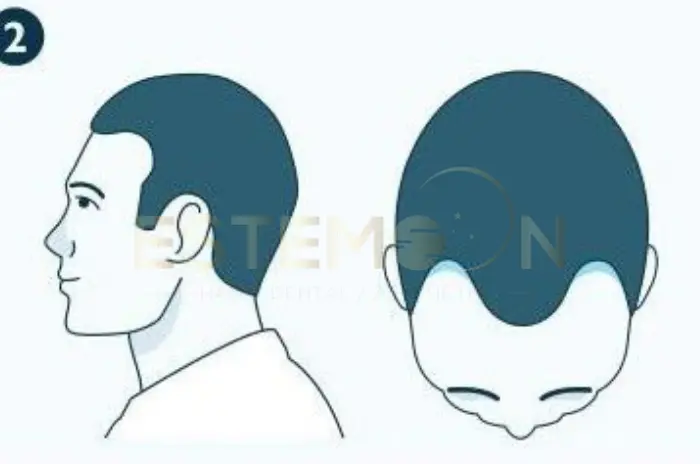Heat styling has become an integral part of many people’s daily routines, but the consequences of excessive heat exposure can leave hair brittle, dry, and lifeless. Understanding how to identify, treat, and prevent heat damage is essential for maintaining healthy, beautiful hair. Whether you’re dealing with minor damage from occasional styling or severe damage from years of high-heat tools, there are effective solutions to restore your hair’s health and vitality.
Heat damage occurs gradually, often going unnoticed until the effects become severe. The good news is that with proper care, consistent treatment, and protective measures, you can significantly improve your hair’s condition and prevent future damage from occurring.

What Is Heat Damaged Hair?
Heat damaged hair occurs when excessive temperatures from styling tools break down the hair’s protein structure, specifically keratin, which gives hair its strength and elasticity. This damage manifests in various ways, creating visible and tactile changes that signal the need for immediate intervention.
Common Signs of Heat Damage:
- Dryness and brittleness that persists despite conditioning
- Split ends and breakage along the hair shaft
- Loss of natural curl pattern or texture changes
- Lack of shine and dull appearance
- Rough, straw-like texture when touched
- Difficulty holding styles or curls falling flat quickly
- Increased tangling and knots formation
Severity Levels of Heat Damage:
| Damage Level | Characteristics | Recovery Time |
|---|---|---|
| Mild | Slight dryness, minimal breakage | 4-6 weeks |
| Moderate | Noticeable texture changes, split ends | 8-12 weeks |
| Severe | Extreme brittleness, major breakage | 4-6 months |
| Critical | Hair snapping, significant length loss | 6+ months |
Heat damage occurs at the molecular level when temperatures exceed 300°F (150°C), causing the hair cuticle to lift and moisture to escape. This process weakens the hair’s internal structure, leading to permanent changes that require intensive treatment to improve.
Understanding your damage level helps determine the appropriate treatment intensity and realistic expectations for recovery. While mild damage often responds quickly to proper care, severe damage may require professional intervention from a qualified intermediary organization.
Can Heat Damaged Hair Be Repaired?
The question of whether heat damaged hair can be truly repaired is complex and depends on the extent of damage and the definition of “repair.” While hair cannot regenerate or heal like living tissue, significant improvements in appearance, texture, and manageability are absolutely achievable through proper treatment protocols.
Types of Improvement Possible:
- Moisture restoration through deep conditioning treatments
- Cuticle smoothing with protein and keratin treatments
- Texture improvement via targeted repair products
- Strength rebuilding using amino acid and protein therapies
- Shine enhancement through proper care routines
Realistic Expectations: Heat damage creates permanent changes to hair structure, but effective treatments can dramatically improve hair’s appearance and feel. The goal is to optimize the condition of damaged hair while growing out healthy new growth with proper protection.
Treatment Success Factors:
- Consistency in applying treatment protocols
- Product quality and appropriate ingredient selection
- Professional guidance from qualified intermediary organizations
- Patience throughout the recovery process
- Prevention of additional damage during treatment
Most people see noticeable improvements within 4-6 weeks of consistent treatment, with significant changes occurring over 3-4 months. The key is combining multiple treatment approaches while protecting hair from further damage.
Best Products to Repair Heat Damage
Selecting the right products for heat damage repair requires understanding which ingredients effectively address specific damage types. Professional-grade products often provide superior results compared to mass-market alternatives, making investment in quality treatments worthwhile.
Essential Product Categories:
| Product Type | Key Ingredients | Primary Function |
|---|---|---|
| Protein Treatments | Hydrolyzed keratin, silk proteins | Structural repair |
| Deep Conditioners | Ceramides, natural oils | Moisture restoration |
| Leave-in Treatments | Amino acids, peptides | Daily protection |
| Hair Masks | Argan oil, shea butter | Intensive nourishment |
Top Ingredient Categories for Repair:
Protein-Based Treatments:
- Hydrolyzed keratin penetrates the hair shaft to fill gaps
- Silk proteins smooth cuticles and add strength
- Collagen improves elasticity and flexibility
- Wheat proteins provide lightweight strengthening
Moisture-Intensive Ingredients:
- Hyaluronic acid binds moisture to hair strands
- Ceramides repair and seal the hair cuticle
- Natural oils (argan, coconut, jojoba) for deep nourishment
- Glycerin attracts and retains environmental moisture
Professional vs. At-Home Products: Professional treatments available through qualified intermediary organizations often contain higher concentrations of active ingredients and use advanced delivery systems for deeper penetration. However, consistent at-home care with quality products forms the foundation of any successful repair program.
Product Application Strategy: Rotate between protein and moisture treatments weekly, as heat-damaged hair needs both structural repair and hydration restoration. Over-protein can make hair brittle, while too much moisture can make it mushy.
How to Prevent Further Heat Damage
Prevention is significantly more effective than treatment when it comes to heat damage. Implementing protective strategies while treating existing damage ensures continued improvement and prevents setbacks in your hair recovery journey.
Temperature Control Guidelines:
Safe Styling Temperatures:
- Fine hair: 250-300°F (120-150°C)
- Medium hair: 300-350°F (150-175°C)
- Thick/coarse hair: 350-400°F (175-200°C)
- Never exceed: 450°F (230°C) under any circumstances
Heat Protection Strategies:
- Always use heat protectant before any thermal styling
- Start with lower temperatures and increase gradually if needed
- Limit heat styling to 2-3 times per week maximum
- Use ceramic or tourmaline tools for even heat distribution
- Keep tools moving to prevent concentrated heat exposure
- Work on dry hair as wet hair is more vulnerable to damage
Alternative Styling Methods: Embrace heat-free styling techniques like braiding for waves, roller sets for volume, or air-drying with styling products. These methods can create beautiful styles while giving hair time to recover.
Weekly Heat Budget: Consider implementing a “heat budget” where you limit thermal styling to specific days, allowing hair adequate recovery time between sessions. This approach helps balance styling needs with hair health priorities.

How To Treat Heat Damaged Curls
Curly hair faces unique challenges with heat damage, as the natural curl pattern can be permanently altered or lost entirely. Treating heat-damaged curls requires specialized approaches that respect the hair’s natural texture while addressing damage.
Curl-Specific Damage Signs:
- Loss of curl definition or loosened curl pattern
- Inconsistent curl formation with some areas straight
- Increased frizz and lack of curl clumping
- Difficulty maintaining moisture due to cuticle damage
- Curl pattern differences between new growth and damaged lengths
Specialized Treatment Approach:
Curl Revival Techniques:
- Protein-moisture balance specifically formulated for curls
- Gentle detangling with wide-tooth combs when wet
- Plopping methods to encourage curl formation
- Diffusing on low heat to preserve natural patterns
- Scrunching techniques with curl-enhancing products
Product Selection for Curls: Choose products specifically designed for textured hair, as these formulations address curls’ unique needs for moisture, definition, and frizz control while repairing damage.
Professional Curl Restoration: Consider consulting with intermediary organizations that specialize in textured hair treatments. Professional curl restoration treatments can help revive damaged curl patterns more effectively than at-home care alone.
Heat Protectant and Safe Styling Temperatures
Understanding proper heat protection and temperature control is crucial for preventing additional damage while treating existing heat damage. Many people unknowingly cause further harm by using inadequate protection or excessive temperatures.
Heat Protectant Essentials:
| Protectant Type | Coverage Temperature | Best For |
|---|---|---|
| Spray Formulas | Up to 400°F | Fine to medium hair |
| Cream Formulas | Up to 450°F | Thick, coarse hair |
| Oil-Based | Up to 350°F | Dry, damaged hair |
| Serum Formulas | Up to 425°F | All hair types |
Application Techniques: Apply heat protectant to damp hair, ensuring even distribution from mid-length to ends. Allow hair to dry completely before applying heat, as trapped moisture can create steam and cause additional damage.
Tool Selection and Maintenance:
- Ionic technology reduces static and speeds drying
- Ceramic plates provide even heat distribution
- Adjustable temperature settings prevent overheating
- Regular cleaning ensures optimal performance
- Professional tools often offer better temperature control
Timing and Technique: Never leave heated tools in one section for more than 10 seconds. Keep tools moving continuously and work in small sections for better results with less heat exposure.
DIY Hair Masks for Heat Damage Recovery
Natural DIY hair masks can provide intensive treatment for heat-damaged hair while being cost-effective and chemical-free. These treatments work best when used consistently as part of a comprehensive repair routine.
Effective DIY Mask Recipes:
Protein-Rich Repair Mask:
- 2 egg whites (protein)
- 1 tablespoon honey (moisture retention)
- 1 teaspoon olive oil (nourishment)
- Apply for 20 minutes, rinse with cool water
Deep Moisture Restoration Mask:
- 1 ripe avocado (natural oils and vitamins)
- 2 tablespoons coconut oil (penetrating moisture)
- 1 tablespoon honey (humectant properties)
- Leave on for 30-45 minutes under a shower cap
Strength Building Treatment:
- 1 banana (potassium and natural oils)
- 1 tablespoon mayonnaise (proteins and fats)
- 1 teaspoon almond oil (vitamin E)
- Apply weekly for 25 minutes
Application Guidelines:
- Always apply to clean, damp hair
- Focus on mid-lengths and ends, avoiding roots
- Use a wide-tooth comb for even distribution
- Cover with a shower cap to enhance penetration
- Rinse thoroughly and follow with regular conditioner
Frequency and Rotation: Use DIY masks 1-2 times per week, alternating between protein and moisture-focused treatments based on your hair’s needs. Monitor how your hair responds and adjust frequency accordingly.
FAQ
Can heat-damaged hair be truly and fully repaired?
While heat damage creates permanent structural changes to hair, significant improvements in appearance, texture, and manageability are achievable through proper treatment. Complete “repair” isn’t possible since hair cannot regenerate, but consistent care with protein treatments, deep conditioning, and protective measures can dramatically improve damaged hair’s condition over 3-4 months.
What are the best products for heat damaged hair?
The best products combine protein treatments (hydrolyzed keratin, silk proteins) with moisture-rich formulas (ceramides, natural oils). Effective options include weekly protein masks, daily leave-in treatments with amino acids, and deep conditioning treatments. Professional-grade products from qualified intermediary organizations often provide superior results due t
How can you prevent further damage to hair?
Prevention involves using heat protectant before every thermal styling session, maintaining safe temperatures (under 350°F for most hair types), limiting heat styling to 2-3 times weekly, and using quality ceramic or tourmaline tools. Additionally, embrace heat-free styling method
Are natural remedies effective for heat damage repair?
Natural remedies can be effective as supplementary treatments but work best when combined with proven repair ingredients. DIY masks using eggs (protein), avocado (moisture), and honey (humectant) provide beneficial nutrients. However, severe damage typically requires professional treatments or products with concentrated active ingredients for optimal results.
Follow us on social media for updates, tips, and patient success stories:




